Mammals
Media

Species Types
Scientific Name
Perimyotis subflavus (formerly Pipistrellus subflavus)
Description
Tri-colored bats, formerly called eastern pipistrelles, are relatively small and look pale yellowish or pale reddish brown. The main hairs are dark gray at the base, broadly banded with yellowish brown, and tipped with dark brown.
Media

Species Types
Scientific Name
Myotis lucifugus
Description
The little brown myotis (little brown bat) is one of our most common bats, but populations are declining. White-nose syndrome has taken a heavy toll in northeastern states. This species is now listed as vulnerable across its range.
Media

Species Types
Scientific Name
Dasypus novemcinctus
Description
There’s no other animal in Missouri that can be mistaken for an armadillo! In the 1950s, they were not considered residents, but now they are regularly found in the southern half of the state.
Media
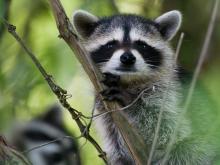
Species Types
Scientific Name
Procyon lotor
Description
When you see the black mask and striped tail of this medium-sized mammal, you know you’ve spotted a raccoon. These nocturnal omnivores are clever and adaptive.
Media

Species Types
Scientific Name
Canis lupus
Description
The gray wolf originally ranged throughout Missouri, but with settlement the species was gradually exterminated. While there is no evidence of a breeding population in the state, wolves are listed as a protected species in Missouri, and they occasionally wander into Missouri from northern states.
Media
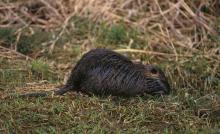
Species Types
Scientific Name
Myocastor coypus
Description
The nutria is a large aquatic rodent native to South America. They were brought to the United States for the fur market. In Missouri, nutria are sometimes trapped in the southeastern part of the state.
Media
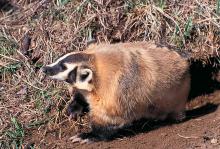
Species Types
Scientific Name
Taxidea taxus
Description
An excellent digger, the American badger is a powerful predator of rodents in grasslands and other open areas. Note its brawny build, impressive digging claws, and the black and white facial pattern.
Media
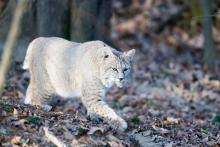
Species Types
Scientific Name
Lynx rufus
Description
The bobcat is a short-tailed wild cat with a distinctive streaked and spotted pattern, a wide face, and pointy ears often with black tufts.
Media
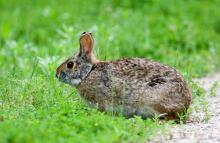
Species Types
Scientific Name
Sylvilagus aquaticus
Description
Larger and yellower than the eastern cottontail, the swamp rabbit is confined to swamps of Missouri’s Bootheel. As a wetland dweller, it’s a good swimmer and diver, but lack of swamp habitat is making this rabbit’s numbers decline.
Media

Species Types
Scientific Name
Vulpes vulpes
Description
The red fox is doglike, with a long, pointed muzzle; large, pointed ears that are usually held erect and forward; moderately long legs; and a long, bushy tail. It occurs statewide but is more common in the northern and western sections of Missouri.
See Also
About Mammals in Missouri
More than 70 species of wild mammals live in Missouri: opossums; shrews and moles; bats; rabbits; woodchuck, squirrels, beaver, mice, voles, and other rodents; coyote, foxes, bear, raccoon, weasels, otter, mink, skunks, bobcat, and other carnivores; deer and elk; and more. Most of us recognize mammals easily — they have fur, are warm-blooded, nurse their young, and breathe air.





















